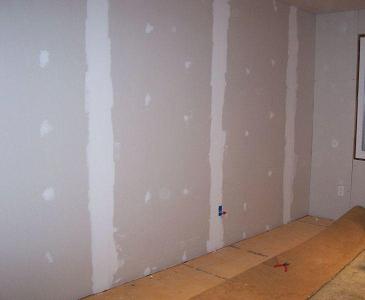What is Joint Compound?
If you’ve ever working on repairing your home, you know that half the battle of every home repair task is choosing which product to use for your project. So, what exactly are joint compound and how do you know which joint compound to use for your wall installation or repair?
Joint compound, also known as drywall mud, is a white powder made of gypsum dust that is used to finish gypsum panel joints, corner bread, trim, and fasteners. They can also patch holes, tears, and other small damages that might be a result of wear and tear on your home.
Different Types of Joint Compound
Visiting your local hardware store or home improvement store might seem overwhelming due to the variety of drywall mud. You might be wondering, “do all types of joint compound work the same? Do I have to use certain types of joint compounds for different kinds of projects?” These are both common questions and our drywall experts at Jones-Heartz are always here to help.
Topping Joint Compound
The first type of joint compound that we see in the building materials industry is topping joint compound. Topping joint compounds are used as the final layer once the drywall tape has been applied – this type of drywall mud is best for final coats on your repair. Some benefits to using this type of joint compound include:
- It is smooth. This product has a very smooth consistency, making it easy to spread and easy to work with. An easy sanding job will save you lots of time and hard work.
- It can be saved and reused. Topping joint compound is a dry powder that mixes with water, so you can make sure that you use only what you need to save the product for future use.
Using topping joint compound is usually a simple process. However, if this is your first time using this product, make sure to carefully follow the instructions when making the compound to ensure that you have the right consistency.
All-Purpose Compounds
The next popular type of joint compound is an all-purpose compound. All-purpose joint compound is used for all phases of the drywall process, including finishing, joints and cornerbread, textures and skimming, spotting fasteners, and covering cracks. Using this product includes the following advantages:
- It is lightweight. All-purpose joint compound is a lightweight substance that is easy to apply and sand, making your project seem like a breeze.
- It has a highly durable surface. All-purpose compound is surprisingly strong for how lightweight it is with an excellent bond to ensure your project stays in top shape throughout the years.
This type of compound is often popular with DIYers because of its simplicity – but be aware that this substance dries much slower than others, which might be a deal-breaker if you’re trying to get the job done fast.
Taping Compounds
Taping compounds are used for the first two layers of a drywall project to fill in cracks and corners – if there’s a crack in your drywall, you need tape and taping compound. Some benefits of using taping compounds include:
- It dries harder. Although taping compound is difficult to sand due to its thickness, it provides a lot of durability and stability once it dries.
- It is great for covering cracks. If you’re looking to cover plaster crack around door and window openings, taping compound is the way to go. The compound and tape will give your space a lasting finished look.
Taping compounds are made to have the best bonding strength and crack resistance for drywall with the use of paper or fiberglass-mat tape. These compounds are generally easy to work with for taping purposes, but we would not recommend using them as finish coats.
Quick-Setting Compound
Lastly, we have quick-setting compound, also known as setting compound. Quick-setting compound is used to fill gaps in gypsum board, as well as deep cracks and holes in drywall and plaster. Some advantages to using this product include the following:
- It is perfect for quick jobs. Quick-setting compound dries fast, allowing you to apply multiple coats in the same day. If you want to get your project done fast, this compound is the one for you.
- It has a strong base coat. When considering the longevity of your drywall, it’s good to note that setting compound has a strong base coat, which protects your drywall against cracking and mold.
Quick-setting compound is the perfect fix for a project with a fast turn-around, but keep in mind that it does dry extremely quickly. When using this compound, you’ll have to make sure that you complete all the proper steps and apply the coats right away.
Contact Our Drywall Experts Today
Now that you know what joint compound is and what you can use it for, it’s time to choose what type of compound you need so you can start handling your project like a pro. If you still have questions about what compound you should use, contact us today to speak with one of our experienced employees. We’re always happy to help!

